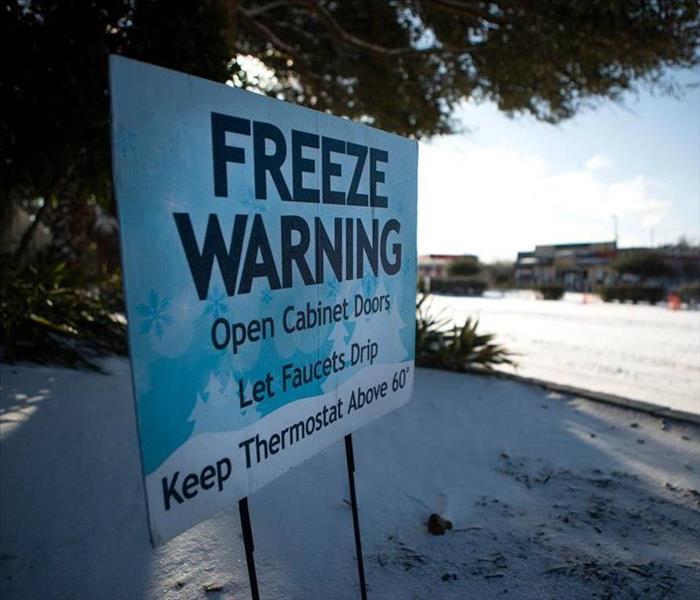Archived Storm Damage Blog Posts
Need Shelter?
7/7/2022 (Permalink)
Are you in need of a place to stay? The United States has been split into four zones based on 40 years of tornado history and more than 100 years of hurricane history, which geographically represent the number and strength of violent windstorms. Zone IV has seen the most and the most powerful tornadoes. Zone III comprises coastal areas that are vulnerable to hurricanes and has seen a lot of tornado activity. Check with your local building official, meteorologist, emergency management official, or television weather reporter to discover more about the wind history in your area. Your home was most likely constructed in compliance with local construction codes that take into account the impacts of "code-approved" design winds in your location.
Shelter's Objective
7/7/2022 (Permalink)
The Foundations of Shelter Design
A shelter's objective is to provide a safe haven for you and your family to withstand a tornado or hurricane with minimal or no damage. The shelter cannot be built in a storm-prone area where it will be swamped during a hurricane. Your refuge should be easily accessible from all sections of your house and be clutter-free. The shelter must be adequately attached to the home foundation to prevent overturning and elevation in order to protect the residents during severe windstorms. The connections between all sections of the shelter must be robust enough to withstand failure, and windborne projectiles must not penetrate the walls, roof, or door.
Flooding Steps
3/29/2022 (Permalink)
Do not take a flooded home or business as a lighthearted matter. You should be very serious in your attempts to enter your home after it has been flooded. Keep these in mind after a flood damage in the Phelps County and surrounding areas.
- Disconnect all the Electronics-these can start fires if left on
- Move anything not bolted to the ground-furniture and tables should be moved out
- Have a Restoration Company remove the water-Extraction of water helps with the drying process
- Get rid of moisture in the affected area-dehumidification will help keep the mold from growing
- Disinfect the home-part of the cleaning process is to disinfect the house before rebuilding.
- Dispose of waste responsibly-tearing out items from the home is naturally the case. Remember to take into consideration items with asbestos or you could be fined for disposing of them incorrectly.
When in need call SERVPRO of River Oaks, we are here to help 24/7.
Act Fast and Reduce Flood Damage!
3/29/2022 (Permalink)
Why You Need to Act Fast When There’s a Flood
In the aftermath of flood damage due to a heavy storm, ground water, or water damage from a burst pipe in the basement, homeowners must act within the first 24-48 hours to help prevent secondary water damage from setting in and becoming a much larger project to restore. SERVPRO of West Fort Bend County is among TX’s premier mold remediation companies and can arrive at the scene promptly to help prevent further damage.
Often, homeowners try to reverse the damage on their own, but this only delays the process further, allowing water damage to occur continuously until they eventually seek the help of water damage restoration companies.
Outlined below are the steps a homeowner or business owner in West Fort Bend County, should take to best combat residential or commercial water damage.
Avoid Additional Risks and Act Safely
Immediately after a storm that causes flooding, families should check for their safety before sifting around or re-entering. The Federal Emergency Management Agency warns families to check for visible structural damage like loosened or cracked foundation before returning home.
Likewise, homeowners should contact utility companies and stay clear of areas with the most flood damage if they suspect gas or electric lines sustained damage in the disaster. Entering a dangerous site is never worth the risk, especially if a professional water damage restoration team is already on the way.
Get the Right Water Cleanup Team on the Job ASAP
A flood presents an emergency for many homeowners and business owners. For that reason, homeowners should contact an emergency water damage restoration team the moment they notice flooding.
Hiring an experienced water and mold removal company is the quickest way to reverse any damage. Industrial-level equipment will always do a better job than equipment homeowners could rent or buy.
Find a company with stunning reviews known for a variety of damage restoration services including commercial cleaning services. A company who has satisfied clients in all areas of damage restoration including fire, flood, water, mold remediation, and commercial cleaning will give you confidence in the level of service you will receive.
How to Prepare for the Water Damage Restoration Company
In the aftermath of a major storm or flooding event, the damage restoration company may take some time to arrive due to road conditions, increased need for services, and other factors. A reputable company will be able to provide a home or business owner with tips on how to assist with prevention of secondary water damage or microbial growth while waiting for professionals to arrive.
While waiting for the water damage restoration service to arrive, homeowners should take pictures and videos of the damage and contact their insurance companies. They should next remove all wet items from the home if it is safe to do so.
Ultimately, a homeowner cannot do a lot to reverse the water damage. Instead, they may need to leave the premises so that the water and fire restoration companies can arrive at the scene and begin working as quickly as possible.
Flood Damage Restoration from SERVPRO
The best way to prevent secondary water damage in the 24 hours after a flood is by calling SERVPRO of West Fort Bend County go-to fire and water restoration company. The sooner a homeowner acts, the easier a water cleanup company can clean up the mess and return them home to normal.
SERVPRO is always prepared to respond to any weather conditions when an emergency occurs. Immediate action mitigates flood damage, and there’s no way to combat the damage effectively without enlisting the help of a professional service company.
Reverse flood damage today. Contact Team Shaw of SERVPRO of West Fort Bend County 281-342-5326.
Storm Safety is MOST Important
1/20/2022 (Permalink)
Secure equipment and valuables
If you live in an area prone to strong winds or hail, keep an eye on the weather forecast so that you can protect your valuables before a storm hits. Ensure any high-value items are in a safe and secure area, stored up high and away from windows. Any outdoor equipment should be securely fastened so it’s not lost or turned into a projectile during a storm.
Keep your employees safe
In the event of a storm, safety is of the utmost concern. Stay away from windows, and take shelter in the safest part of your property. If your building doesn’t have a designated storm shelter, have employees take shelter in an area devoid of windows, such as a lavatory or break room. Prepare an emergency plan ahead of time and communicate it with employees, so they’ll know what to expect. Practice an emergency drill if possible, so that everyone will be prepared if weather conditions are threatening your safety.
Always Be Ready For Any Situation
10/29/2021 (Permalink)
Be ready to evacuate or stay at home.
Always listen to authorities regarding whether you should evacuate or stay at home.
If a hurricane is coming, you may hear an order from authorities to evacuate (leave your home). Never ignore an order to evacuate. Even sturdy, well-built houses may not hold up against a hurricane. Staying home to protect your property is not worth risking your health and safety.
You may hear an order to stay at home. If driving conditions are dangerous, staying at home might be safer than leaving.
If you need to evacuate:
- Grab your emergency supply kit and only take what you really need with you (cell phone, chargers, medicines, identification like a passport or license, and cash).
- Unplug your appliances. If you have time, turn off the gas, electricity, and water.
- Follow the roads that emergency workers recommend even if there’s traffic. Other routes might be blocked or flooded. Never drive through flooded areas—cars and other vehicles can be swept away or may stall in just 6 inches of moving water.
- Contact your local emergency management office and ask if they offer accommodations for owners and their pets. Learn more about evacuating with your pet.
Hurricane Watch VS Warning
10/29/2021 (Permalink)
Know the difference between a hurricane “watch” and “warning.”
Listen for National Weather Service alerts on TV or radio or check for them online. There are two kinds of alerts:
- A hurricane watch means hurricane conditions (sustained winds of 74 miles per hour [mph] or higher) are possiblein a stated area. Experts announce hurricane watches 48 hours before they expect tropical-storm-force winds (sustained winds of 39 to 73 mph) to start.
- A hurricane warning is more serious. It means hurricane-force winds are expected in a stated area. Experts issue these warnings 36 hours before tropical-storm-force winds are expected in the area to give people enough time to prepare for the storm.
For more information about hurricane watches and warnings, Check out the National Weather Service's Hurricane Center. If you hear that there is a hurricane watch or warning in your area, you can take steps to get ready.
Staying Warm Before the Storm
7/6/2021 (Permalink)
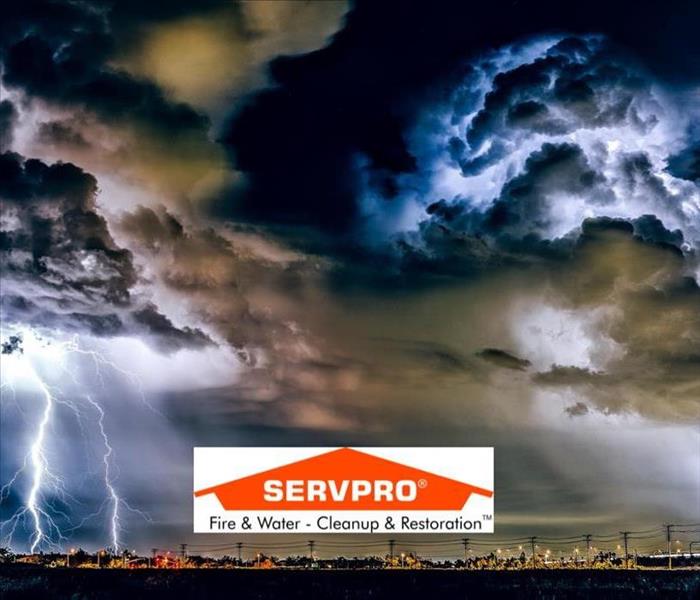 Call SERVPRO of W est Fort Bend County today for your storm damage restoration. 281-342-5326
Call SERVPRO of W est Fort Bend County today for your storm damage restoration. 281-342-5326
Have your furnace inspected before cold weather arrives. Inspect the heat exchanger for cracks, install a clean air filter, and check the thermostat to see if it’s working properly. Inspect fireplaces, and chimneys before using, and have them cleaned if needed. Keep drapes and blinds closed, except when windows are in direct sunlight. Put up storm windows, or install sheet plastic window insulation kits on the inside of windows. Cover or remove any window air conditioners. Insulate electrical outlets and switches on exterior walls with foam seals available at home centers. Caulk any cracks or holes on the outside of your house. Repair or replace weather stripping and thresholds around doors and windows. Run paddle ceiling fans on low in reverse (clockwise when looking up) to circulate warm air. Put draft snakes on window sills, between window frames, and against doors. If you heat with propane or fuel oil, make sure the tank is full. If you heat with wood or coal, have plenty of fuel on hand.
Storm Prep!
7/6/2021 (Permalink)
Remove area debris
While you can’t clear your entire neighborhood of potential missiles, you should remove or secure anything surrounding your home that could become an airborne projectile. That includes lawn furniture, toys and low-hanging branches or limbs. Cutting low-hanging branches, unstable bushes or trees can prevent larger and more expensive accidents from happening. Proper tree pruning also increases the chances that your trees can make it through a storm.
Clean out your gutters & drains
It’s always a good idea to keep your gutters and downspouts clear, as they prevent water from collecting around your home. In the case of a severe storm, clear gutters can prevent instant flooding of your attic or basement. Conduct a visual inspection of your gutters and downspouts to be sure nothing blocks the flow of water from your roof and away from your home.
Call SERVPRO of West Fort Bend County today at 281-342-5326, out highly trained technicians
Ice Storm in West Fort Bend County
3/26/2021 (Permalink)
SERVPRO of West Fort Bend County is here to help restore your home or business to pestorm conditions.
With the recent ice storm that engulfed the greater Houston area:along with many others, busted pipes, collapsed ceilings and suspicious growth have been the talk of the town. Thankfully SERVPRO of West Fort Bend County is equipped with the right tools to help remediate your situation as needed.
Bursting pipes was the MOST common call we have received
During the freeze, one of the most common calls we received was pipes bursting in your West Fort Bend County home. Depending on where the pipe busted can cause even more damage to your home or business. Making sure your pipes are wrapped correctly BEFORE an ice storm will not only make your life easier, it will also save you money. Click the link to find out how to properly wrap your pipes! https://homeownerfaqs.com/how-to-prevent-frozen-pipes/#:~:text=Simply%20take%20some%20old%20rags,duct%20tape%20around%20the%20towel.
Is Mold Growing from an unseen Busted Pipe in your Attic?
Having a busted pipe in your attic doesn't always mean it will be visible. A pipe can bust and slowly be leaking into the insulation causing mold to grow overtime. Many customers have called with this type of predicament from the ice storm. The reasoning for the call was from the "smell of mold" in the air. Mold is not only a remediation issue but can cause health effects. Our highly trained technicians are trained to remediate the mold in your home/business.
Many West Fort Bend County homes and businesses were affected during the 2021 ice storm. If you or someone you know needs remediation call SERVPRO of West Fort Bend County today to help restore your home to prestorm conditions.
Windstorms Are No Joke!
1/11/2021 (Permalink)
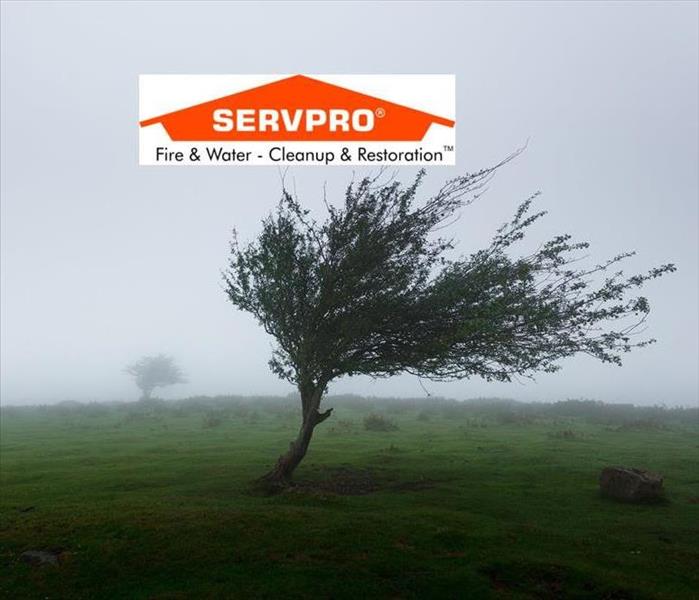 Call SERVPRO of West Fort Bend County today at 281-342-5326!
Call SERVPRO of West Fort Bend County today at 281-342-5326!
If a Windstorm Occurs
Windstorms are no joke so follow these simple but effective rules to keep you and your loved ones safe.
When you’re indoors
- Bring all family members together into a safe location such as a basement and take cover under a heavy piece of furniture. If your home does not have a basement, take cover in the bathroom.
- Do not stand near doors or windows.
- Do not use the elevator if you live in a Highrise.
- Do not remain in a mobile home because it can overturn in the wind.
When you’re outdoors
- Take cover in a secure building with a sturdy roof that can withstand the force of wind and weight of snow.
- If you are in an open area and no shelter is available, take cover under a highway overpass, in a ditch or a hollow in the ground. Lay face down on the ground and protect your head with your hands.
Get YOUR Home Ready!
10/9/2020 (Permalink)
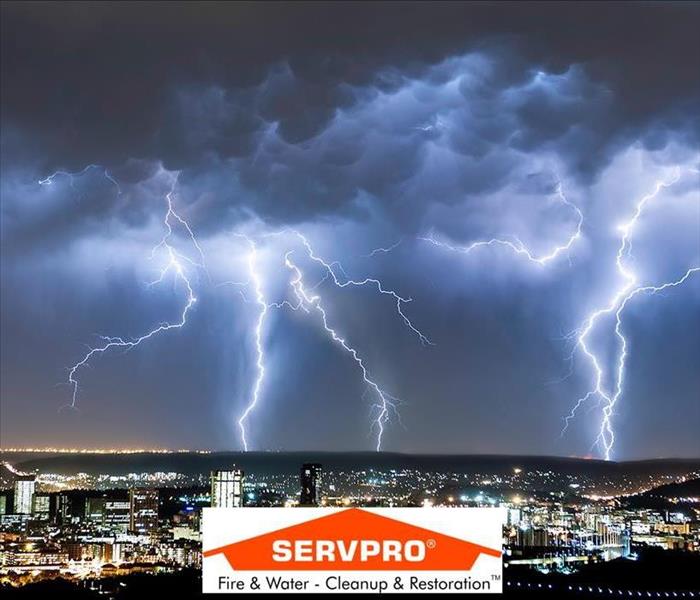 Call SERVPRO of West Fort Bend County today at 281-342-5326!
Call SERVPRO of West Fort Bend County today at 281-342-5326!
Getting your home ready for the colder temperatures and stormy weather conditions of fall is smart, whether you are a homeowner, a business owner, or both. Weather may be unpredictable during the fall here in Texas, but you won’t have to worry about it if you prepare now. Here at SERVPRO of West Fort Bend County, we have some preparation projects for you to consider:
- Remove dead leaves and debris from your gutters and drainpipes. This will prevent clogging during wetter weather. Drain all outdoor faucets ahead of freezing weather now, as well.
- While late summer is not the time to heavily prune trees and bushes, it is a good time to remove any branches that are dead or look like they could prove dangerous during a fall storm. If you have a tree that you think may be dead or dying, contact an arborist to come and take a look at it. If it is actually dead and near your house, you will want to have it removed before anything happens during a fall storm.
- Examine all your windows and doors for cracks. If you find any, have them sealed now so that you can stay warm and save energy this fall and winter. You’ll be saving both time and money here!
- A roof inspection ahead of colder weather will tell you if your roofing needs any attention before fall storms. Loose shingles can be replaced more easily when it’s warm and dry outside. If you have siding on your home, look it over well for any loose sections; fall storms bring wind that can create problems here.
- Make sure your entrance walkways are in good shape with no buckling or crumbling. When the surrounding ground is wet it can compromise cement, causing it to crack and split, and that’s an accident just waiting to happen.
Safety Tips For A Storm Damaged Business!
10/9/2020 (Permalink)
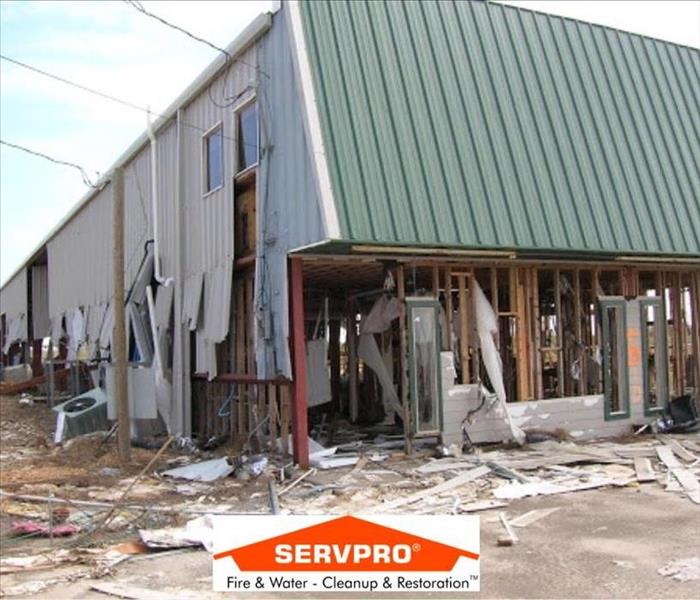 Call SERVPRO of West Fort Bend County today!
Call SERVPRO of West Fort Bend County today!
During storm season here in Texas, your business may experience some damage from flooding. Here are some tips you can follow to manage flood damage in your business:
Safety First!
- Do not enter the building until a professional has cleared it if you believe that it has been structurally damaged or if flood risk remains.
- Do not go anywhere near downed power lines or any standing water or metal objects near these downed wires. Stay away from damaged trees, and do not wade into floodwaters.
- Avoid using open flames, especially indoors. Keep a fire extinguisher handy.
- Once the worst has passed, assess any and all damage that the building has received. Inspect every part of the property for possible destruction, including machinery, making sure to avoid standing water or using electricity.
- Do not climb onto your roof unless the building has been deemed structurally sound, and practice precaution when climbing and working on ladders.
- If using a chainsaw to cut fallen or damaged trees or branches, take precautions to ensure they do not cause any more damage when they fall.
- Remove any wet material, such as rugs or carpets, and properly dry them out to prevent mold from establishing itself. Dry your premises by opening windows and doors; it can be helpful to have fans running if it can be done safely.
- You are at risk for mold within the first 24-48 hours following a flood, so it is vital to remove the water as soon as possible and start remediation. Flooding poses a risk to drywall, support beams, and foundations, as well, and floodwater can also contain dangerous contaminants and sewage so it must be avoided.
- Keep track of everything that was destroyed or damaged in the storm by documenting it through photos or videos along with putting together a list of broken items. You will need this list for insurance purposes.
Biggest Risk?
7/2/2020 (Permalink)
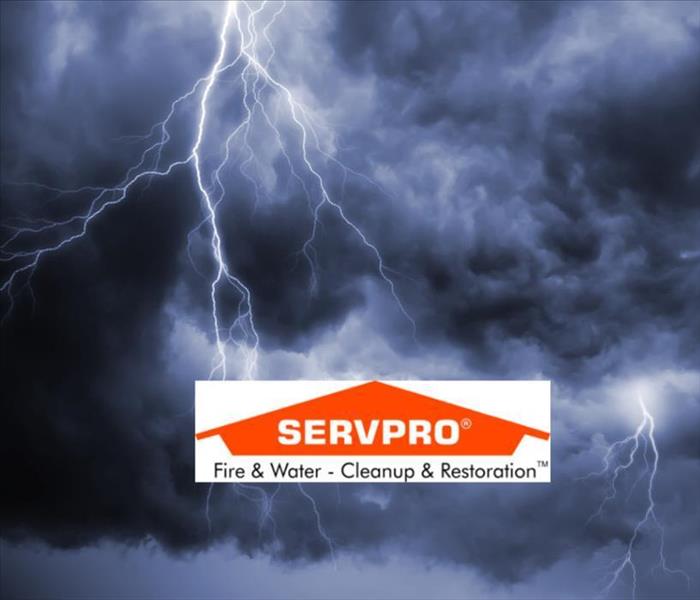 Call SERVPRO of West Fort Bend County TODAY! 281-342-5326
Call SERVPRO of West Fort Bend County TODAY! 281-342-5326
Know the Biggest Risk in Your Home Insurance's Tornado Coverage
The biggest risk you may face if your home suffers major damage during a severe storm or tornado is being underinsured. With changing costs of construction materials and labor, home insurance reconstruction costs have increased over the years.
Although some policies do include the option for inflation adjustment, this is not sufficient to cover varying reconstruction costs. Take some time to verify the value your home is insured for. Then, be sure to inquire about what happens in a claim if your home is underinsured.
Some policies include guaranteed replacement cost or actual cash value. However, the limit may be capped. Other policies may limit you to the insured value. With so many homeowners underinsured, this is a major problem that may leave you in a situation where even with insurance, you won't have enough to rebuild.
This is one aspect of your insurance you don't want to leave unchecked. Contact your agent or broker to discuss your policy and if necessary have them verify that the current insured value is up to par. Ensure you have all the best insurance endorsements available to guarantee you are fully covered in a major loss.
Flood Control Fixes!
7/2/2020 (Permalink)
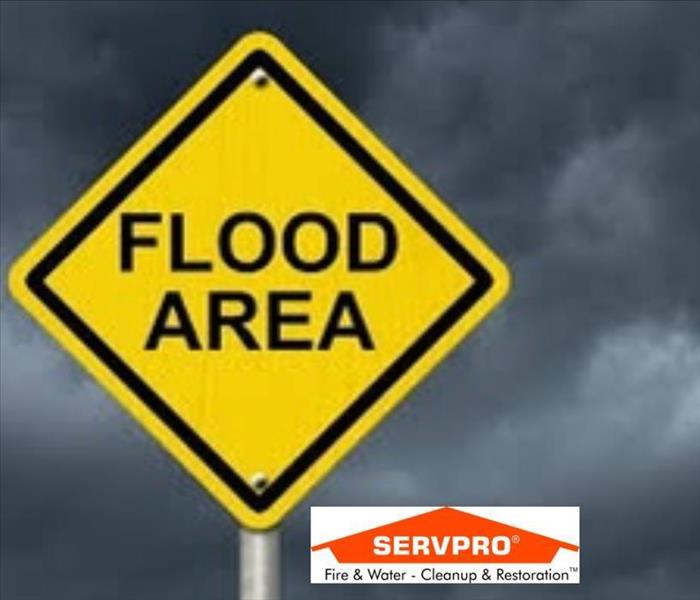 SERVPRO of West Fort Bend County is #HereToHelp! Call today at 218-342-5326!
SERVPRO of West Fort Bend County is #HereToHelp! Call today at 218-342-5326!
Flood control fixes you can make to help manage storm water runoff and prevent flood damage to your home:
- Slope soil away from your home's foundation. Don’t forget to fill and slop soil under decks and porches.
2. Water from your roof, downspouts, and eavestroughs can find its way to your home if they are clogged, leak, or don't carry water far enough from your home. Clean out eavestroughs and downspouts in the fall and spring. You can also use downspout extensions to carry water far enough away from your foundation as an effective flood control.
3. Set up a downspout to empty into a rain barrel. Using rain barrels for rain water storage reduces the cost of watering shrubs, flowers, and vegetables.
4. Plug holes or cracks in your eavestroughs, downspouts, downspout extensions and seal these with silicon caulk. Even a trickling leak can let plenty of water into your basement to become a mold problem.
5. Look for holes or cracks in your foundation and completely fill these with vinyl concrete patching.
After A Storm
2/24/2020 (Permalink)
While you wait for the insurance company, take some photos or even video so you have a record of what happened. And if you do need to take immediate action to prevent further damage, keep all receipts and record any money you spend. These supporting documents can be very important when the insurance company reviews your claim.
Keep Up-To-Date on Your Coverage
As weather patterns change, so does the risk to your home. You could find yourself subject to extensive damage due to stronger storms or fluctuating temperatures. Find out what coverage is available, and if you anticipate needing more than your current policy provides, call your insurance agent and make the necessary changes.
With a few policy adjustments and a good plan for winter home maintenance, you should be able to keep your home safe from storm damage or repair it quickly when it occurs.
Are you Covered for Weather AND Water Damage?
1/9/2020 (Permalink)
Does your home insurance cover weather and water damage?
Winter storms, spring thaws, cold snaps, and other weather variations can severely damage your home. Luckily, this damage is often covered by your home insurance.
Consider that in 2018, winter storms caused an estimated 2 billion dollars in insured losses according to Impact Forecasting, a company that analyzes catastrophe risks. As weather patterns change, bringing harsh conditions with them, claims for weather-related damage are likely to increase.
Insurance for Weather Damage
When wild weather hits your home, you may be able to make a claim. Your ability to do so depends on the type of policy you have and the perils it covers or excludes. But in the case of covered damage, compensation from your insurance company will help you cover your losses, so you can repair your home and move on.
Prepare For The Storm!
10/9/2019 (Permalink)
If conditions are right for a hurricane in your area, this is how you can prepare:
- Stay tuned to local radio and TV for warnings, safety announcements or instructions.
- Invest in a portable battery-operated or hand-crank radio.
- Turn off all utilities, including propane tanks.
- Cover all of your home’s windows with storm shutters or 5/8” marine plywood, cut to fit and ready to install. Even duct tape – amazing as it is – doesn’t prevent windows from breaking.
- If it’s safe, move outdoor furniture and grills inside. They can be deadly flying debris.
- If emergency officials haven’t directed you to a public shelter, get your family to the basement, a closet, a small room or a hallway away from windows. The more walls between you and the outside, the better.
- Lean a mattress against the wall of the room you're in.
- Don't open your windows. Keep the wind and rain outside.
- Hand out flashlights. The hurricane will probably disrupt electrical service.
During and After the Hurricane
10/9/2019 (Permalink)
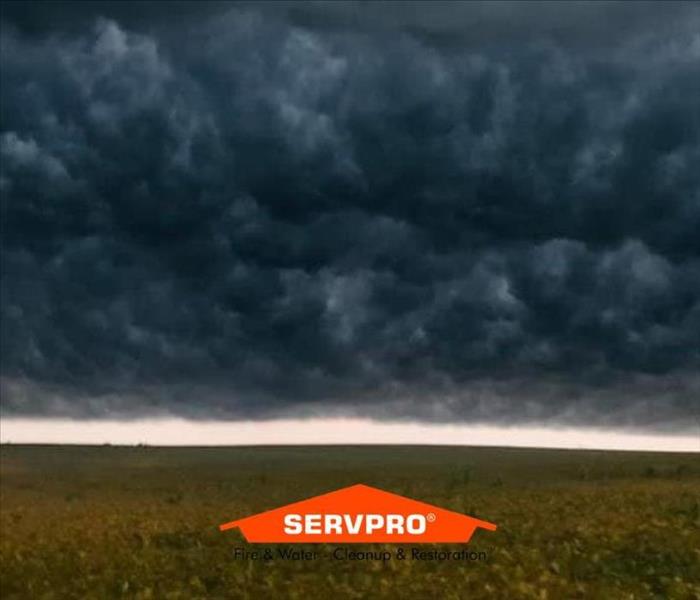 Call SERVPRO of West Fort Bend County today @ 281-342-5326
Call SERVPRO of West Fort Bend County today @ 281-342-5326
During a Hurricane
If you are have not evacuated, go to your safe room. If you do not have a safe room, follow these guidelines:
- Stay indoors and away from windows and glass doors.
- Close all interior doors—secure and brace external doors.
- Keep curtains and blinds closed. Do not be fooled if there is a lull; it could be the eye of the storm—winds will pick up again.
- Take refuge in a small interior room, closet, or hallway on the lowest level.
- Lie on the floor under a table or another sturdy object.
After a Hurricane
Recovering from a disaster is usually a gradual process. Safety is a primary issue, as are mental and physical well-being.
- Let your friends and family know that you are safe.
- Do not return home unless authorized to avoid electrical hazards and other dangers.
- Do NOT drink tap water unless authorized to do so.
- Check the temperature in your fridge or freezer. Anything that has remained at 40 degrees Fahrenheit or colder is safe to eat. Otherwise, throw it out to be safe.
- Also, throw away ANY food that has come in contact with flood waters which may carry waterborne diseases, chemicals, etc. Better safe than sorry.
- Document any damage with photos and contact your insurance company.
- In your home, immediately remove or air out water-damaged items. It’s critical to minimize the chance of mold growing in your home.
- Do NOT drive or walk through floodwaters which may be electrically-charged and filled with contaminants; just six inches of moving flood water will knock a grown man down. Do NOT underestimate the power of moving waters.
Flood Zones?
7/2/2019 (Permalink)
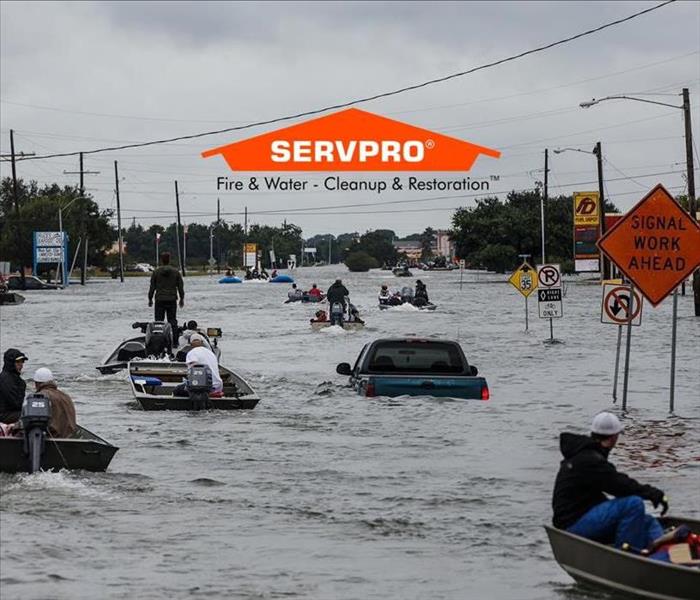 Call SERVPRO of West Fort Bend County at 281-342-5326
Call SERVPRO of West Fort Bend County at 281-342-5326
After Hurricane Harvey, thousands of people were sent into a financial panic. Most people did not have flood insurance because their house was not located in what is considered a flood zone. Thanks to FEMA, the Federal Emergency Management Agency, many of these families were able to begin the recovery process. But what now? What does this once every hundred years storm mean for your insurance? You will be surprised.
New Flood Zones
Did the Harvey floodwaters cause over $5,000 in damage to your home? If they did, congratulations, you are now in what is considered to be a flood zone. Even if you have never flooded before this one event was all the insurance companies needed to raise their rates for flood insurance in your area. While it is possible and likely Houston will never experience another Harvey, we can not predict how the rivers and flood zones will change. Hence, causing the caution for all the rise in insurance.
Do You Need Flood Insurance?
There is no easy answer to that question. If you are in a flood zone, many communities will require you to have it. Here at SERVPRO of West Fort Bend County, we say "You can never have too much insurance. Better safe than sorry." Our recommendation is if you are along the coast or in a flood zone including those formulated after Harvey, purchase flood insurance. If you are outside of a flood zone speak with your agent to calculate the risk and consider putting together an emergency storm fund. If you do deny to purchase flood insurance your agent will need to receive it in writing. Ultimately, the decision is yours.
Either way, SERVPRO of West Fort Bend County will be ready to take care of you when the next storm hits; And if you do have insurance we are on their vendor list. All you have to do is request us and we will come to take care of you. Experienced a catastrophic weather event? Call us at 281-342-5326.
Better to be Safe Than Sorry!
7/2/2019 (Permalink)
Please make sure you have adequate insurance coverage, especially if you live in a storm-prone geographic area. You might also consider creating an emergency fund, which is always a good practice generally, but it’s especially important to have extra resources on hand in the event of a natural disaster. You never know when you will have to evacuate and travel and leave your home.
Start making an emergency plan with your family, friends, and household by discussing the types of disasters that could strike and what to do at different times of the day. Discuss how to prepare and respond to emergencies that are most likely to happen where you live, learn, work, and play. Keep your emergency plan as simple as possible and use places that are very familiar and hard to forget. Identify responsibilities for each member of your household and plan to work together as a team. SERVPRO of West Fort Bend County is here to help. Give us a call 281-342-5326.
Protect Your Home/Business from Storm Water
2/21/2019 (Permalink)
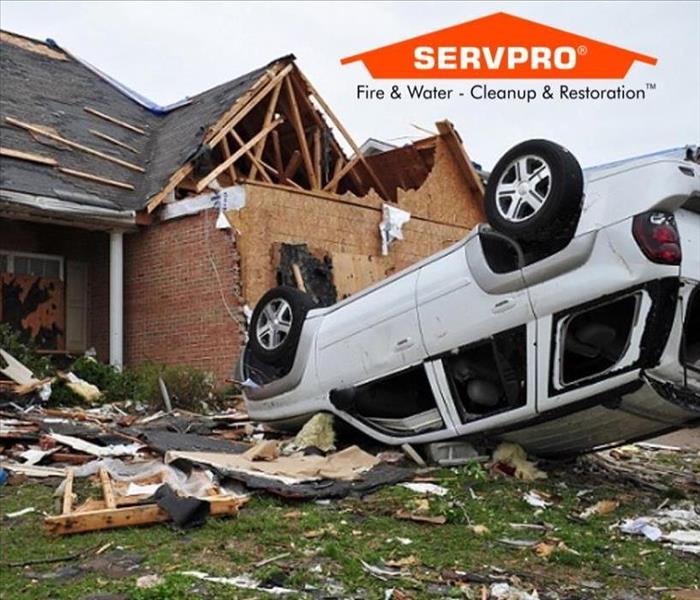 If your home or business have experienced storm damage call us at (281)-342-5326 to make it "Like it never even happened."
If your home or business have experienced storm damage call us at (281)-342-5326 to make it "Like it never even happened."
Stormwater runoff is rain that has not been soaked into the ground, so it flows over the ground until it finds somewhere to go. Ideally, the water would find a stream or river to flow into, but this is not always the case. Sometimes the water will flow straight into your house. Water damage is never fun, and trying to get rid of water as well as clean up the rest of the mess a storm has left behind can be a real hassle. The best way to handle stormwater runoff is to make sure it doesn’t happen to begin with. If you are up for a bit of landscaping, you can optimize your yard to keep stormwater away from your building.
- Swales: Simply put, a swale is just a type of trench meant to carry water and redirect it away from something important. If you decide to install swales in your yard, make sure they are redirecting somewhere that the water will not cause damage such as a stream or pond.
- Rain Gardens: These gardens are designed with plants that are able to take up excess water to keep it from flowing freely. They also help filter the water so that the water that does reach ponds and rivers tends to be cleaner than water that has just flowed over driveways and roads.
- Draining Driveways: Driveways are one of the largest contributors to stormwater runoff. Installing drainage areas on the sides of the pavement or using gravel can help minimize the amount of water that becomes runoff.
Sometimes there is so much runoff that no matter what you do, your house may suffer from some water damage
SERVPRO is "Ready For Whatever Happens"
1/2/2019 (Permalink)
When a storm or disaster strikes your home or business, SERVPRO's Disaster Recovery Team is poised and "Ready for whatever happens." With a network of more than 1,700 franchises nationwide, the SERVPRO system strives to be faster to any size disaster. Strategically located throughout the United States, SERVPRO's Disaster Recovery Team is expertly trained and readily equipped to handle the largest storms and highest flood waters. Providing experience, manpower, equipment, and other resources, the Disaster Recovery Team is always on call and available to assist SERVPRO of West Fort Bend County. SERVPRO's Disaster Recovery Team has responded to hundreds of disaster events. In the aftermath of a disaster, there is only one objective: to help you make it "Like it never even happened."
Dangers Of A Sewer Backup
10/8/2018 (Permalink)
Black water can contain many types of harmful bacteria.
Even if the rest of your building has protections in place to prevent flooding, you need to be certain there are also items in place to prevent sewage from backing up into the building. Even if there does not seem to be much rain water, it only takes a little to wreak havoc within your local sewer systems.
Additionally, contact a professional water removal service to handle a backed-up sewer instead of handling the contaminated water yourself. Sewage damage should only be cleaned by a certified restoration company.
SERVPRO of West Fort Bend County is a locally-owned franchise with national resources that helps homeowners to overcome mold, water, and fire damage at as little cost and strain as possible. Give us a call at (281) 342-5326
The Do's & Don'ts After Your House Floods
10/8/2018 (Permalink)
What To Do After Flooding
- Remove excess water by mopping and blotting.
- Wipe excess water from wood furniture after removal of lamps and tabletop items.
- Remove and prop wet upholstery and cushions.
- Place aluminum foil or wood blocks between furniture legs and wet carpeting.
- Turn air conditioning on for maximum drying in summer.
- Remove colored rugs from wet carpeting.
- Remove art objects to a safe, dry place.
- Gather loose items from floors.
What NOT To Do After Flooding
- Don't leave wet fabrics in place. Hang furs and leather goods.
- Don't leave books, magazines or other colored items on wet carpet or floors.
- Don't use your household vacuum to remove water.
- Don't use television or other household appliances.
- Don't turn on ceiling fixtures if ceiling is wet, and keep out of rooms where ceilings are sagging.
Call your local professionals at SERVPRO of West Fort Bend County (281) 342- 5326 and let us make that storm damage "Like it never even happened".
When Storms or Floods hit Fort Bend County, SERVPRO is ready!
7/2/2018 (Permalink)
SERVPRO of West Fort Bend County specializes in storm and flood damage restoration. Our crews are highly trained and we use specialized equipment to restore your property to its pre-storm condition.
Faster Response
Since we are locally owned and operated, we are able to respond quicker with the right resources, which is extremely important. A fast response lessens the damage, limits further damage, and reduces the restoration cost.
Resources to Handle Floods and Storms
When storms hit Fort Bend County, we can scale our resources to handle a large storm or flooding disaster. We can access equipment and personnel from a network of 1,650 Franchises across the country and elite Disaster Recovery Teams that are strategically located throughout the United States.
Have Storm or Flood Damage? Call Us Today (281) 342-5326
Tips for Residents Dealing with Storm Damage in Fort Bend County
7/2/2018 (Permalink)
Living in Texas we all know just how unpredictable the weather can be! Storm damage can happen at any time and can cause an intense amount of damage to your home or business. Strong winds can cause downed trees and damage to your roof, heavy rains can cause unforeseen flooding. These events can easily create safety and health hazards as well, so having a strategy in place if you are ever effected by a storm will help you be ready if disaster strikes.
We here at SERVPRO of West Fort Bend County have compiled a list of the next steps to take after incurring any storm related damage.
1. First, Assess the Damage -Immediately cover any broken windows and secure doors. If your roof is leaking, temporary plastic sheeting can be used to prevent even more water damage. You can clear debris that is blocking walkways or driveways but be sure to never touch any downed powerlines.
2. Now it’s Time to Call SERVPRO of West Fort Bend County!
We are a highly trained Emergency Response / Disaster Recovery team that specializes in Storm Damage Cleanup & Restoration. As a trusted leader in the industry we pride ourselves at having the fastest response time and every minute counts when water is where it shouldn’t be.
3. Next, Notify Your Insurance Company –
Your next step should be to call your insurance agency and let them know the situation. The claims process can be time consuming so be sure not to procrastinate. Most likely you will be assigned a claim number and an adjuster who will be speaking with you in a timely manner to schedule a visit. We work with all insurance providers and make sure there are always open lines of communication on our progress with the drying out process and taking care of your home or business.
If your home or business has been effected by a storm, we here at SERVPRO of West Fort Bend County are always here to help! Our phones are answered 24 hours a day/ 7 days a week just give us a call (281) 342-5326 and we’ll be on our way!

 24/7 Emergency Service
24/7 Emergency Service
